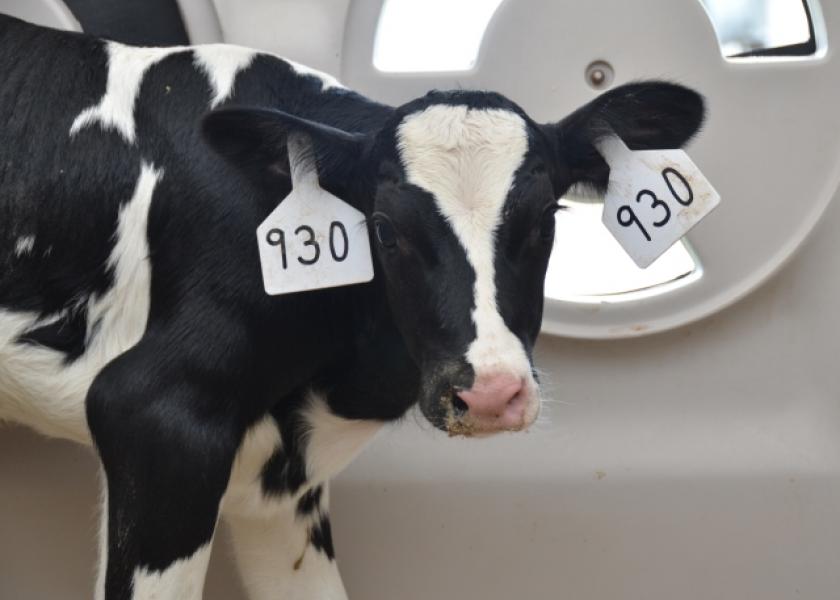Keeping Up with Navel Infections

Approximately 5 to 20% of the calves in the U.S. develop navel infections, and 1.6% of the calf mortality is attributed to this condition. The navel cord is a flexible cord-like structure that contains the blood vessels that connect the dam with the fetus during gestation. At birth the navel cord stretches and breaks leaving the calf with a navel stump that is a potential site for pathogen entry with direct access to the bloodstream. Under normal conditions the navel stump will dry up and fall off at around two weeks of age. However, if the navel stump is not properly cared for, the calf may end up developing a navel infection and even form an abscess or hernia. In some calves, especially those with weak immunity from inadequate colostrum, this infection will spread to the bloodstream and reach the liver, joints, lungs, kidneys and other organs, compromising calf survival.
Calves with navel infections will present wet or pus ridden navel cords and their navel areas will be swollen, hard, and painful to the touch. Young calves (less than 20 days old) with fever and no appetite must be evaluated for navel infection. Sometimes affected calves may have a normal looking navel appearance. If the visual inspection of the navel cord is inconclusive, pinch the navel stump and look for a pain reaction.
Affected calves should be treated with antimicrobial and supportive therapies to prevent abscess formation and control the spread of the disease through the blood. The antimicrobial therapy might fail if it is started too late or if it is discontinued earlier than recommended. Calves with a navel infection may become chronic and perform poorly throughout their productive life. It is important to prevent navel infections; the keys are to reduce the navel exposure to pathogens and increase calf defenses.
Reduce pathogen exposure
1. Keep it clean. It is extremely important to keep everything clean around the calf, especially before any disinfectant is applied. A clean maternity area is a must, but don’t forget the pen or hutch where the calf is moving next.
2. Disinfect it. Immediately after birth, provide full coverage of the navel with a fresh disinfectant solution. If this task is delayed, its effectiveness will be reduced. When applying a disinfectant remember:
- Keep the disinfectant solution clean (i.e. cover cups, change disinfectant solution frequently). Contaminated cups can become the source of the problem rather than the solution.
- Farm personnel should only dip navels if they are wearing clean gloves. Manipulating calves with dirty hands may increase the chances for pathogen exposure.
- Make sure that full coverage of the navel cord is achieved. This is easier to attain with a dip than a spray, but the spray might be a cleaner alternative.
- Follow the label indications for storage. To maintain its effectiveness, most disinfectants should be kept in closed containers at room temperature, away from heat, moisture, and direct sunlight. Keeping disinfectants at room temperature is a real challenge, especially in summer and winter.
3. Repeat disinfection. Re-apply the disinfectant solution when the calf is moved to its individual hutch. If you have concerns with navel infections, apply the disinfectant solution once a day until the cord dries up.
4. Manage flies. Flies can be an infection source. Implement good management practices to reduce the fly population in maternity and calf hutches.
Increase calf defenses
Feed good quality colostrum as soon as possible. The acquired immunity provided by a good colostrum will help the calf to fight a navel infection.
Disinfectant solutions – which one should I choose?
The two most common disinfectant solutions are iodine (7%) and chlorhexidine (2 or 4%). However, after the US Government restricted the access to 7% iodine almost a decade ago, this disinfectant can only be acquired through a vendor registered to handle controlled products. This limitation has driven the marketing of multiple alternative products. To select a navel disinfectant, focus on two things: 1) there is research proving the product of choice is as effective at preventing naval infections as iodine or chlorhexidine, and 2) your product of choice is not an irritant.
Note that 70% ethanol (alcohol) should not be used to dip navels, as it delays navel cord separation, and it can be irritating. Some dairy producers have chosen to use teat dips for navel dipping. If this is your choice, make sure that the ingredients do not delay the drying up of the cord and that the product has been proven effective for navel dipping







